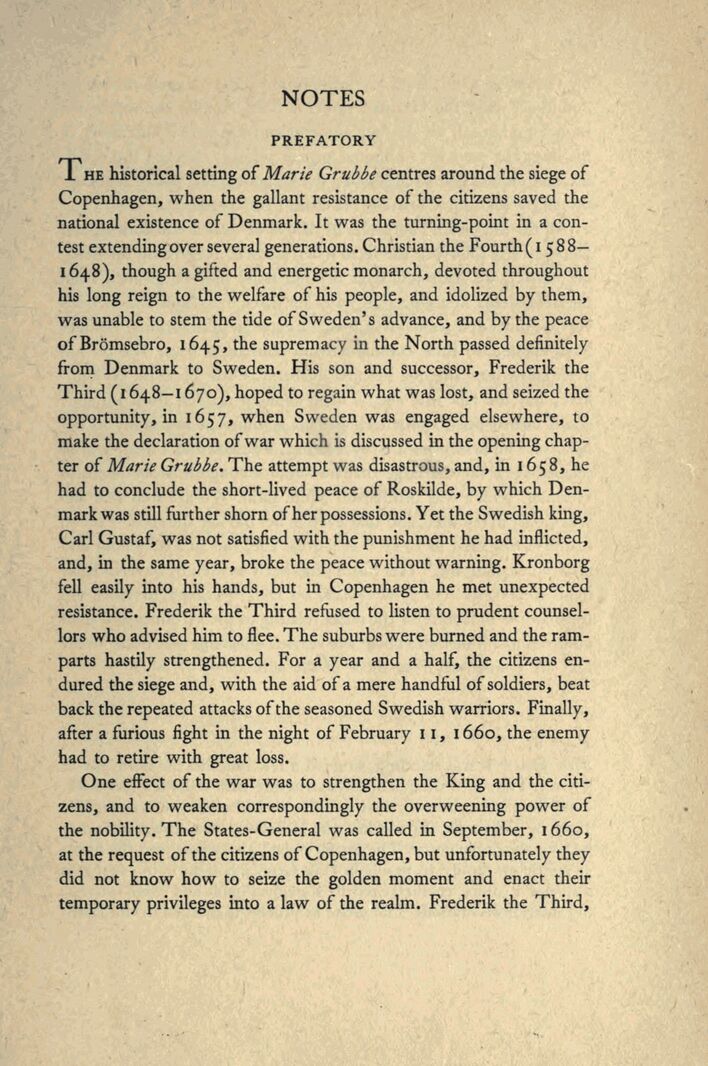
Full resolution (JPEG)
- On this page / på denna sida
- Notes

<< prev. page << föreg. sida << >> nästa sida >> next page >>
Below is the raw OCR text
from the above scanned image.
Do you see an error? Proofread the page now!
Här nedan syns maskintolkade texten från faksimilbilden ovan.
Ser du något fel? Korrekturläs sidan nu!
This page has been proofread at least once.
(diff)
(history)
Denna sida har korrekturlästs minst en gång.
(skillnad)
(historik)
NOTES
PREFATORY
The historical setting of Marie Grubbe centres around the siege of
Copenhagen, when the gallant resistance of the citizens saved the
national existence of Denmark. It was the turning-point in a
contest extending over several generations. Christian the Fourth (1588—1648),
though a gifted and energetic monarch, devoted throughout
his long reign to the welfare of his people, and idolized by them,
was unable to stem the tide of Sweden’s advance, and by the peace
of Brömsebro, 1645, the supremacy in the North passed definitely
from Denmark to Sweden. His son and successor, Frederik the
Third (1648—1670), hoped to regain what was lost, and seized the
opportunity, in 1657, when Sweden was engaged elsewhere, to
make the declaration of war which is discussed in the opening
chapter of Marie Grubbe. The attempt was disastrous, and, in 1658, he
had to conclude the short-lived peace of Roskilde, by which
Denmark was still further shorn of her possessions. Yet the Swedish king,
Carl Gustaf, was not satisfied with the punishment he had inflicted,
and, in the same year, broke the peace without warning. Kronborg
fell easily into his hands, but in Copenhagen he met unexpected
resistance. Frederik the Third refused to listen to prudent
counsellors who advised him to flee. The suburbs were burned and the
ramparts hastily strengthened. For a year and a half, the citizens
endured the siege and, with the aid of a mere handful of soldiers, beat
back the repeated attacks of the seasoned Swedish warriors. Finally,
after a furious fight in the night of February 11, 1660, the enemy
had to retire with great loss.
One effect of the war was to strengthen the King and the
citizens, and to weaken correspondingly the overweening power of
the nobility. The States-General was called in September, 1660,
at the request of the citizens of Copenhagen, but unfortunately they
did not know how to seize the golden moment and enact their
temporary privileges into a law of the realm. Frederik the Third,
<< prev. page << föreg. sida << >> nästa sida >> next page >>
Project Runeberg, Sun Dec 10 16:26:48 2023
(aronsson)
(diff)
(history)
(download)
<< Previous
Next >>
https://runeberg.org/mariegrubb/0279.html



